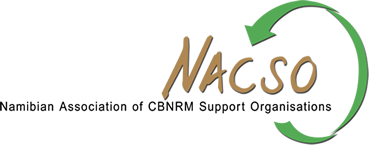
In Wereldsend, a research campsite located in the rugged Kunene region of northwest Namibia, conservancy representatives from Kunene and Erongo Regions met from 29-30 April, to organise logistics for the upcoming game counts in conservancies in the area.
There were two main activities on the agenda, firstly to verify available resources and assign conservancy cluster team leaders for the count, and secondly to introduce and demonstrate how a new game count data entry application works.
This year’s northwest game count will start on the 20th of May, and last until the 1st of June. During this time, staff and volunteers from conservancies, with assistance from the Ministry of Environment and Tourism officials, and workers from conservancy support NGOs, will count the wildlife spotted along fixed route transects in the conservancies.
Previously, game count paper forms used for data entry were sent to Windhoek and the data would be entered manually. This year, conservancies will enter results in a game count application, using tablet devices. Aggregated data for each conservancy will then be uploaded to an online database. This system will create an efficient process that will provide real time data, readily available for processing. The devices will be given to team leaders before the game counts begin.
Game count data is used to determine wildlife population estimates, distribution, and trends over time and this information is used together with other modelling factors such as rainfall and habitat as guidelines during quota setting by the Ministry. The road-based counts are supplemented by data collection methods such as moonlight counts, aerial count and camera traps, especially when setting quotas for non-plains species such as predators.
Conservancy residents benefit from meat harvested from wildlife under a quota system which is based upon game counts and a scientific assessment of the sustainable off-take rate. Getting conservancy members involved in activities such as the counts also instils a sense of pride, ownership and responsibility towards their natural resources. It is important to strike a balance between sustainable harvesting of game and the distribution of benefits, such as meat, especially in the aftermath of a drought.
Wildlife and habitat conservation techniques in Africa are increasingly coming under threat, both locally and across the continent from those who are against community conservation initiatives.
The MET’s Muzuma Uakendisa cautioned conservancy people to refrain from giving information that might harm the programme’s reputation. He said this in reference to a recent article that claims that the decline in wildlife is due to a wrong quota setting formula that was used last year, which allegedly led to overharvesting.
“Every technique has its shortfalls and people often criticise our counting methods, forgetting that it’s a standard technique that is used worldwide”, said Muzuma. The game counts and overall, the community conservation programme is constantly under review and draws upon the best conservation practices.




